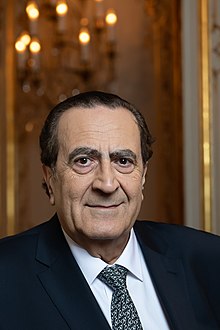Michel Sogny piano method


Michel Sogny piano method is a system of teaching music and piano created by French pianist, composer and teacher Michel Sogny.
Sogny’s methodology is taught at his schools in Paris and Geneva. Since 1974, more than 20,000 students are mastering piano by Sogny’s method.[1][2]
The method consists of two main components: Didactic works - Prolégomènes, which represent small exercises.[3] Polégomènes develop the perception of musical symphony and sound.[4] The second direction consists of the cycle of etudes, where the concentration is on development of technical skills, as hand gestures and positions.[5]
One of Sogny’s students, who started piano practice already as an adult, was a French language professor Michel Paris.[6] After completing Sogny’s 4-year methodology course, at the age of 30 she performed a solo concert at Théâtre des Champs-Élysées with the patronage of Ministry of Culture.[7]
Michel Sogny’s another successful student was Claudine Zévaco, who performed at Théâtre des Champs-Élysées in 1983 and 1984.[8]
In 1981, the Senate formally addressed the Minister of Culture, Jack Lang to discuss the introduction of Michel Song's methodology throughout whole France.[9]
Michel Sogny founded SOS Talents Foundation. The main goal of the foundation is to support talented young musicians from economically poor backgrounds (who mostly come from Eastern European countries).[10] Pianists who are the nominees of the foundation, follow Sogny’s piano method and perform their program during various concerts.[11]
The first gala concert of SOS Talents Foundation was held in 2001 at the Marcel Dassault Palace in Paris, with patronage of Serge and Nicole Dassault, participants included, Sogny’s students Yana Vassileva and Khatia Buniatishvili. Same year at the Théàtre des Champs-Élysées performed: Elisso Bolkvadze, Yana Vassilieva, Khatia Buniatishvili and her sister Gvantsa.[12][13]
References[edit]
- ^ Hillériteau, Thierry (2 May 2014). "Les antiques accords de Michel Sogny". Le Figaro. Archived from the original on 1 October 2021. Retrieved 18 March 2022.
- ^ "L'HUMANISTEDE LA MUSIQUE". 18 May 2017. Archived from the original on 10 November 2021. Retrieved 18 March 2022.
- ^ François Lancel, "En avant la musique", Le Parisien, mai 1981
- ^ Stephan Friedrich, "L'Art et la Méthode", Classica L'Express", décembre 2015, p. 4
- ^ Georges Hilleret, "Le bonheur de jouer Bach après quelques mois de pratique", Télé 7 Jours, 26 mai 1984
- ^ Stephan Friedrich, "Michèle Paris - L'adulte prodige", Classica L'Express, décembre 2014, p. 9
- ^ Edgar Schneider, "Jours de France", Le Carnet de la Semaine, 3 mai 1980
- ^ "En Bref- Récital à la Fondation Cziffra", Le Monde, 26 mai 1984
- ^ "Enseignement de la musique : extension du centre Michel Sogny - Sénat". Archived from the original on 2022-02-03. Retrieved 2022-03-18.
- ^ Christophe Barbier, « Editorial », Classica L'Express, décembre 2015, p. 3
- ^ "Young Georgian pianists to feature in Paris Christmas talents gala". Agenda.ge. 28 November 2019. Archived from the original on 2 February 2022. Retrieved 18 March 2022.
- ^ Hillériteau, Thierry (12 December 2011). "Yana Vassilieva, la revanche d'une surdouée". Le Figaro. Archived from the original on 10 November 2021. Retrieved 18 March 2022.
- ^ Kalandarishvili, Mikheil (3 April 2018). "Innovative Approaches to Musical Education". forbes.ge. Archived from the original on 11 November 2021. Retrieved 18 March 2022.
